Key takeaways:
- Breakdancing battles serve as a unique form of storytelling, fostering emotional connections and community among dancers.
- Techniques such as body control, video analysis, and footwork drills are essential for improving breakdancing skills.
- Adaptability and emotional expression are crucial for evolving during battles, helping dancers to connect with the audience and each other.
- Resilience in the face of challenges, including self-doubt and criticism, can serve as a catalyst for personal growth and confidence in dance.
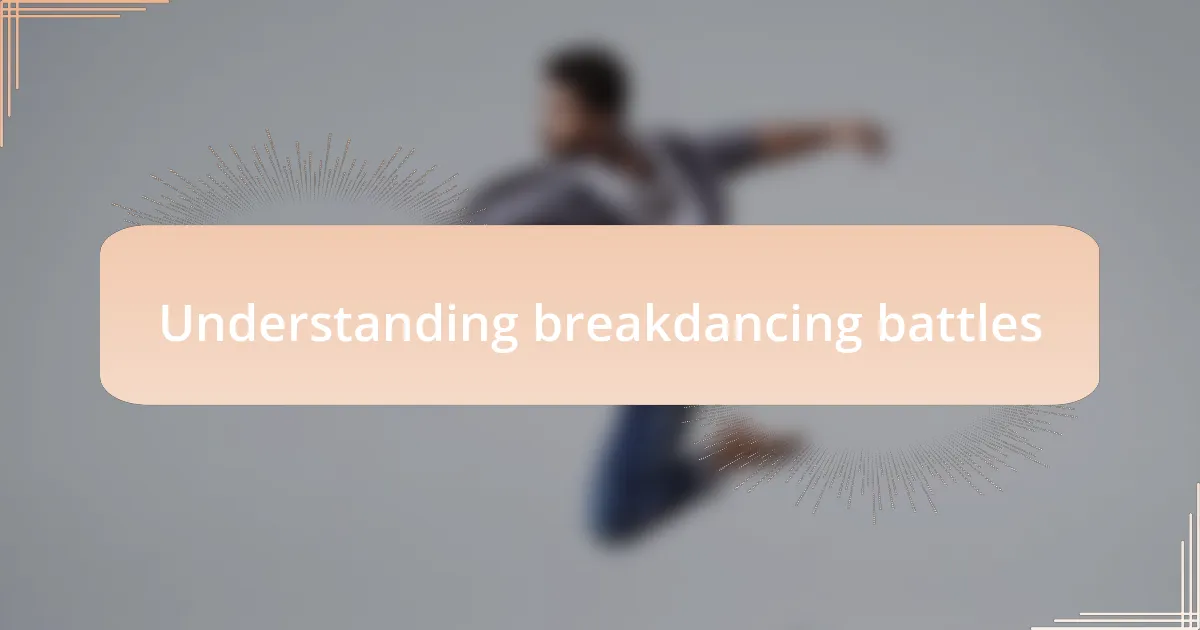
Understanding breakdancing battles
Battles in breakdancing are more than just a display of skill; they are a form of storytelling. I remember my first battle vividly; it felt like I was sharing pieces of my soul through every move. Isn’t it fascinating how every dancer communicates their unique style and emotions during these intense moments?
The atmosphere during a battle can be electric. The energy of the crowd, the anticipation, and even the pressure from your opponent all converge to create an unforgettable experience. I often found myself feeding off the audience’s energy, which would push me to perform beyond my limits. Have you ever felt that adrenaline rush when you’re on the floor, knowing that every move could sway the judges’ favor?
Understanding the significance of a battle also means recognizing the sense of community it fosters. I’ve formed deep connections with other dancers through friendly rivalry and mutual respect. Don’t you find it incredible how these moments can transform into lifelong friendships, bonding over shared passions and growth?
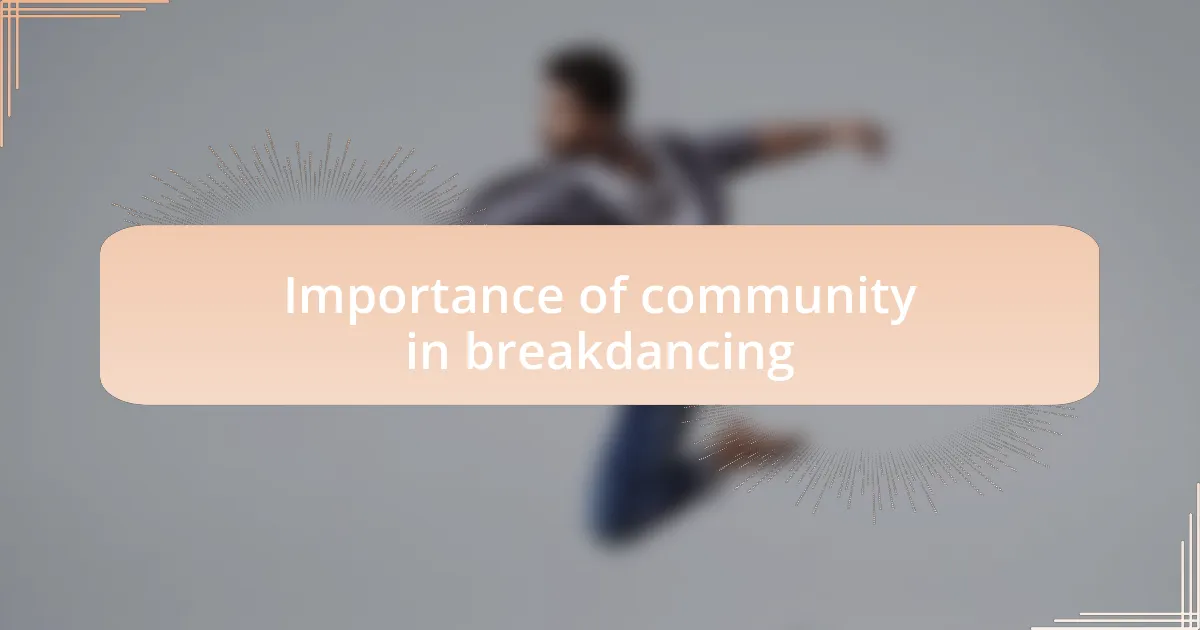
Importance of community in breakdancing
Gathering as a community in breakdancing plays a crucial role in shaping our skills and identity as dancers. I recall attending a local jam where seasoned breakers would generously share tips and tricks. Watching them effortlessly move across the floor made me realize how powerful mentorship can be. Don’t you think having someone to guide you not only enhances your technique but also adds depth to your passion?
The camaraderie within the breakdancing scene creates a support system that is incredibly uplifting. I’ve struggled with self-doubt before entering battles, but hearing encouragement from fellow dancers has often sparked the confidence I needed. It makes a world of difference to know that someone believes in your potential. Have you experienced that reassuring presence from your peers, making you feel like you belong?
Moreover, our community thrives on collaboration and creativity. Participating in cyphers with friends has not only expanded my vocabulary of movements but has also sparked innovative styles I would have never explored alone. The joy of sharing ideas and inspirations within our circle can lead to artistic breakthroughs that elevate the whole scene. Isn’t it amazing how our dance journeys intertwine, creating a rich tapestry of expression?

Techniques to improve breakdancing skills
One valuable technique to enhance breakdancing skills is focusing on proper body control. I remember my early days, trying to pull off complex moves without really understanding how to engage my core. When I finally dedicated time to practicing isolation and control exercises, it was like flipping a switch. Do you recall how suddenly mastering your balance can open up new possibilities in your dancing?
Another effective method I’ve found is video analysis. Filming my practices and battles was initially uncomfortable, but it became a game changer. I’ve spotted bad habits that I was completely unaware of, like leaning too far during spins. It’s fascinating how witnessing yourself can highlight areas for improvement that might actually surprise you. Have you ever watched yourself dance and thought, “Wow, I can do better”?
Lastly, incorporating footwork drills into your routine can dramatically sharpen your skills. I used to underestimate the power of simple steps, but practicing variations of foundational moves helped me develop fluid transitions. I often challenge myself to create new patterns by mixing them. If you haven’t tried incorporating footwork into your training, I encourage you to give it a shot – you might just unlock some hidden potential!

Strategies for evolving during battles
When it comes to evolving during battles, adaptability is key. I vividly recall a time when my opponent switched up their style mid-battle, showcasing an unexpected blend of strength and creativity. It threw me off for a moment, but instead of getting flustered, I reminded myself that battles are about ego as much as technique. Have you ever found yourself faced with an unexpected move that forced you to rethink your strategy? Being flexible and willing to modify your approach in real-time can truly elevate your performance.
Another strategy that has served me well is the power of observation. During battles, I take mental notes not only of my own moves but also of how my opponents are responding. I once noticed an opponent constantly anticipating my footwork, so I decided to incorporate feints and misdirections in my following rounds. It’s amazing how being aware of another dancer’s rhythm can help you stay one step ahead. Have you ever adjusted your set based on what you saw and felt in the moment?
Lastly, emotional expression can be a game changer. I genuinely believe that the energy you bring to the floor can elevate your presence. There was a battle where I poured every ounce of my passion into my choreography, and the crowd responded with an electrifying energy that pushed me even further. Remember, battles are not just about technical prowess; they are also about connecting with the audience and expressing your unique story. How do you convey your own story when you dance?
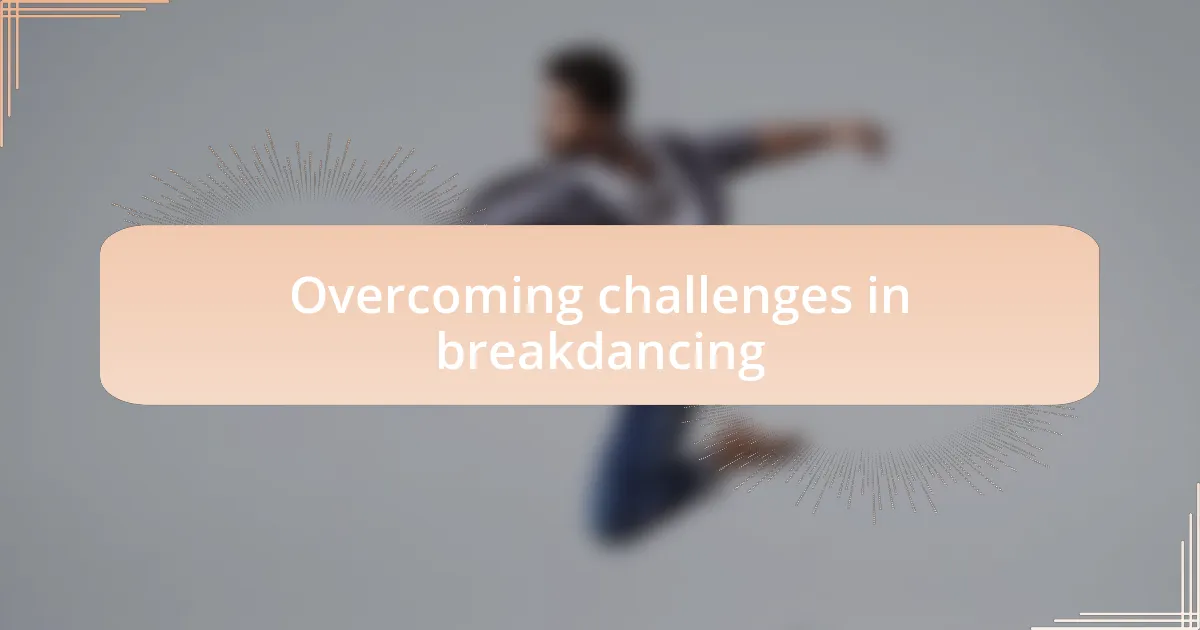
Overcoming challenges in breakdancing
Overcoming challenges in breakdancing often requires resilience in the face of defeat. I recall a time when I completely blanked during a battle, my mind spiraling with doubt. Instead of spiraling, I took a deep breath and focused on the music, letting it guide my movements. Have you ever found your flow again just by reconnecting with the rhythm? It’s a powerful reminder that, in those challenging moments, leaning into what you love can bring you back on track.
In my experience, facing criticism can be a significant hurdle. I remember a harsh comment from a judge that stung more than I expected. Initially, I let it dampen my spirit, but then I realized it was an opportunity to grow. I started taking feedback more constructively, analyzing what I could adjust in my style. Have you ever transformed negative feedback into a catalyst for improvement? It’s all about shifting your perspective to see challenges as stepping stones toward your evolution.
Another common challenge is the self-doubt that can creep in before a big battle. I vividly remember standing backstage, heart racing, feeling like an imposter as I prepared to perform. It wasn’t just the competition; it was my internal dialogue that needed a reset. I began adopting affirmations to boost my confidence, reminding myself of my journey and growth. Can you relate to that feeling of doubt before stepping onto the floor? It’s a universal experience, and embracing it has pushed me to silence my inner critic and let my passion shine through.
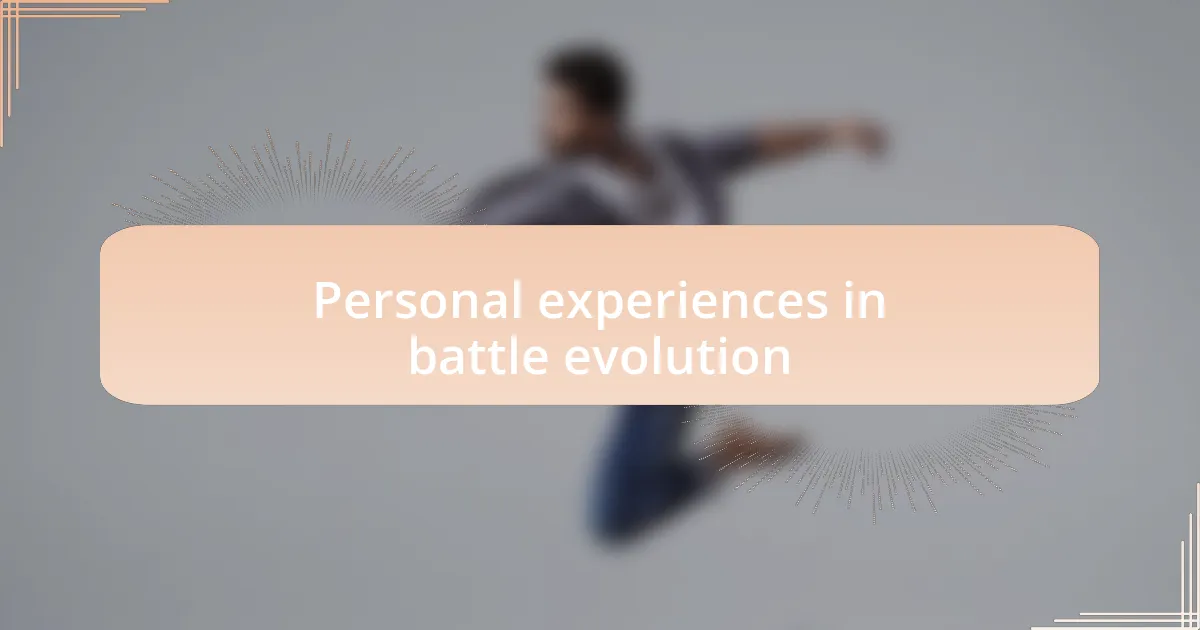
Personal experiences in battle evolution
The evolution I experienced during battles has often felt like a rite of passage. I recall a moment when I was up against a dancer whose style was entirely different from mine. Initially intimidated, I slowed myself down, observing not just their moves but their energy. Have you ever learned something profound simply by watching someone else? That battle taught me to embrace diverse styles and adapt, transforming my approach and expanding my toolkit.
In another battle, the adrenaline was racing through my veins, and I attempted a difficult move I had only practiced a few times. When I stumbled, I could feel the collective gasp from the audience. Instead of feeling defeated, I laughed it off and transformed that moment into a playful interaction, bouncing back with a spin. Have you ever turned a mishap into your own victory? It’s amazing how such experiences can propel our growth as performers, teaching us to take risks and embrace the unexpected.
I remember a pivotal battle where I truly felt my growth, not just in skills but in mindset. I entered the floor feeling calm and connected to the crowd, allowing their energy to fuel my performance. It was a complete shift—I wasn’t solely focused on winning; I was there to share my passion. How does it feel when you dance for love rather than competition? That realization crystallized my evolution, reinforcing that battles are not only about showcasing talent but also about celebrating the journey together with the audience and fellow dancers.
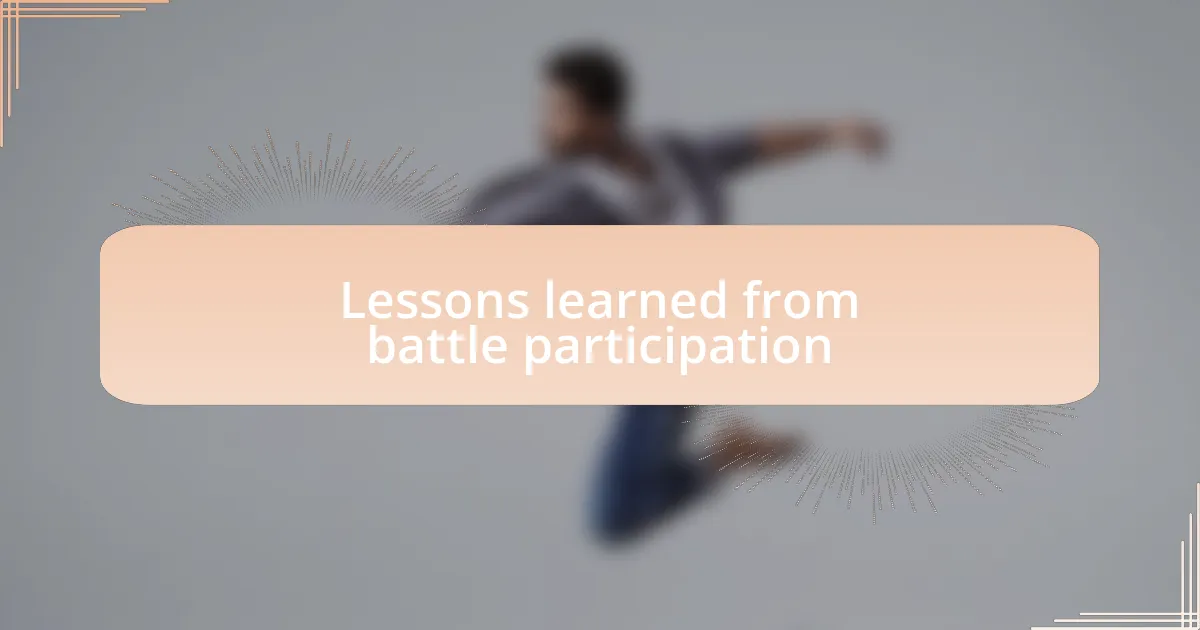
Lessons learned from battle participation
The moment I stepped into a battle, I quickly learned that confidence isn’t just about nailing moves perfectly. There was one instance where I entered feeling uncertain, but seeing other dancers own the floor inspired me. It hit me that authenticity speaks louder than skill—my unique flair and personal style had a place too. Isn’t it refreshing to know that your individuality can shine even among fierce competition?
Another battle taught me the importance of resilience. I faced a competitor whose energy was electric, and I felt the pressure mount with every step. When I missed a transition, my instinct was to hang my head, but instead, I turned it into a playful moment, adding a small freestyle that brought smiles from the crowd. Have you ever found strength in vulnerability? That experience cemented my understanding that our mishaps can turn into opportunities for connection, enriching the battle atmosphere.
Reflecting on my journey, I realized battles force us to confront our limits and push beyond them. There was a time when I was too focused on technique, trying to perfect each move rather than expressing myself. One day, I let go of that rigidity, embracing the rhythm and flow of the music. How liberating is it to dance without constraints? That shift in mindset opened new doors for my creativity and ultimately deepened my connection with the dance community.